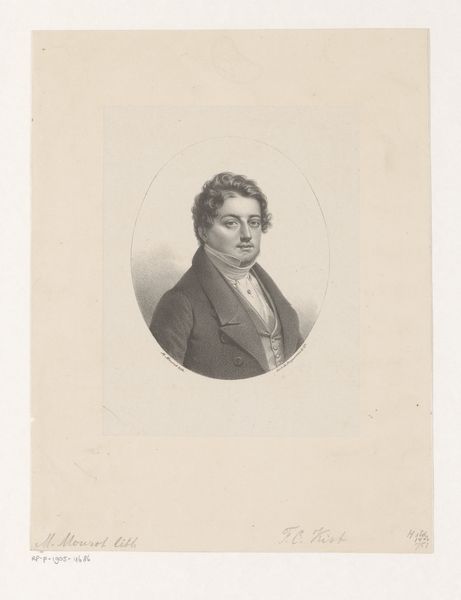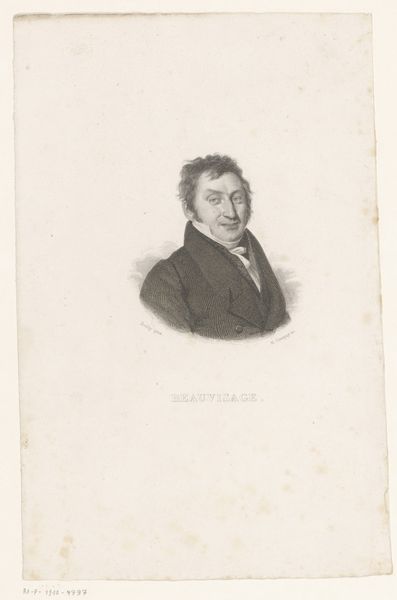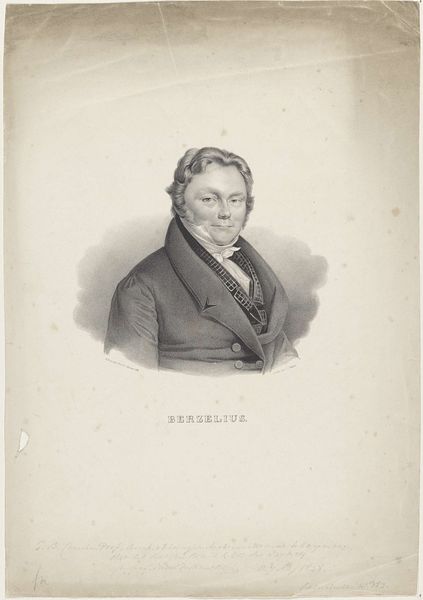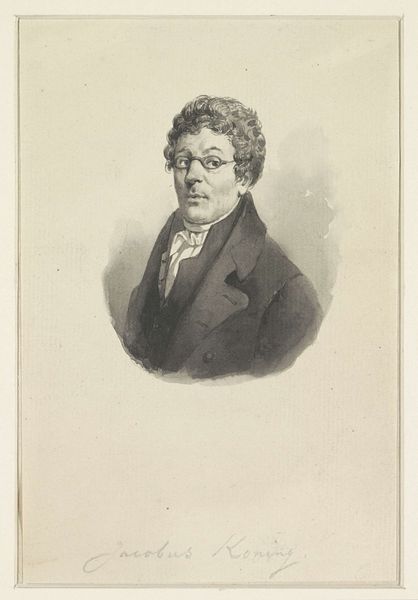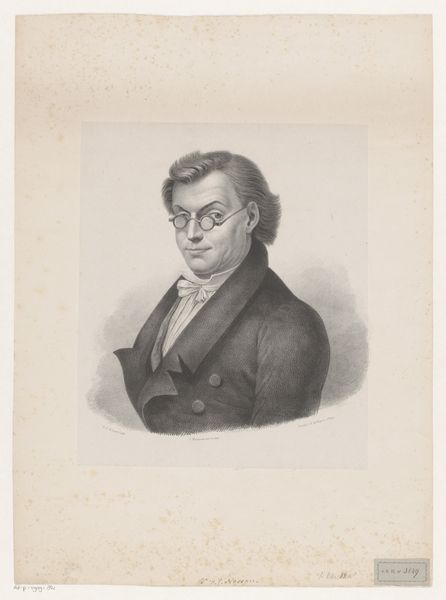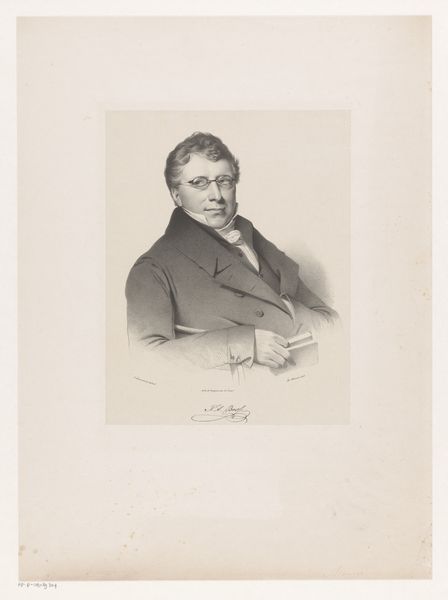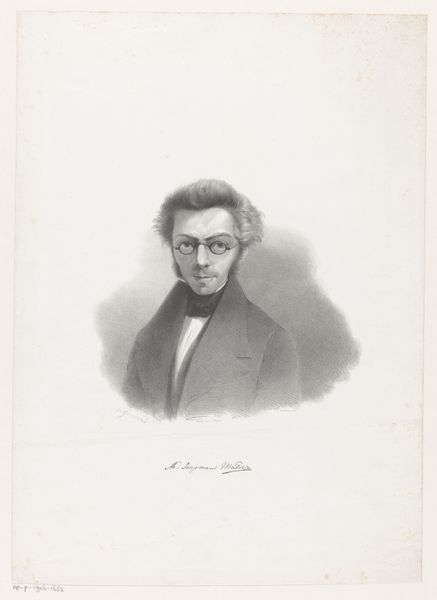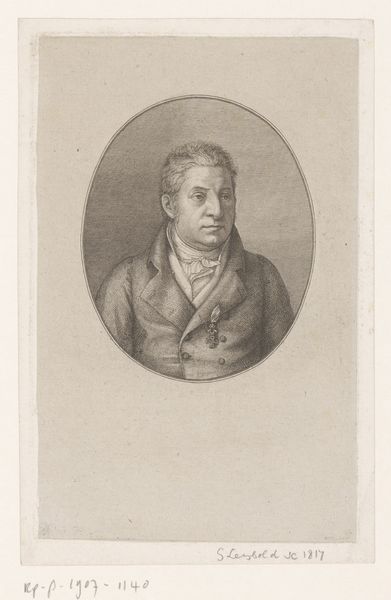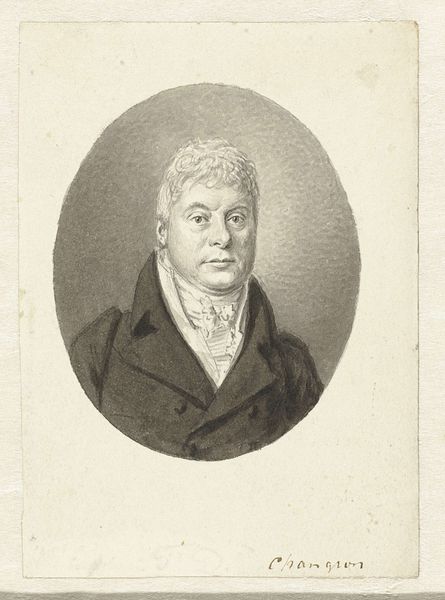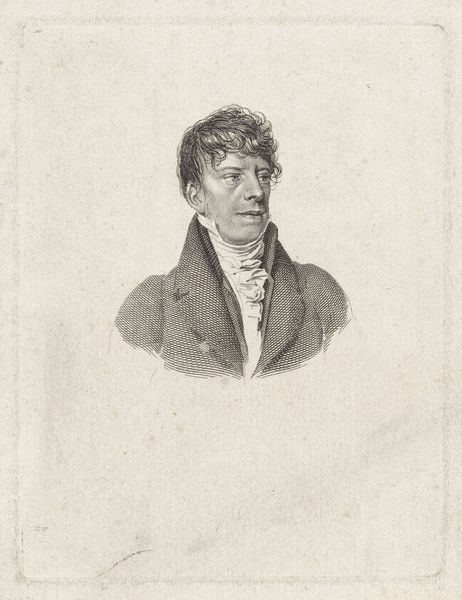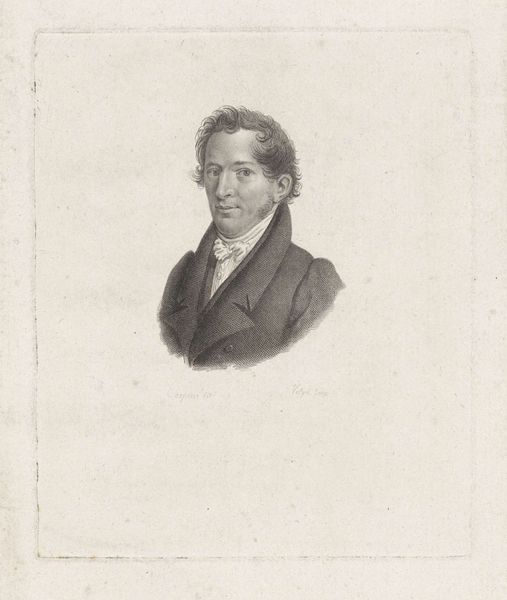
Portret van Christianus Petrus Eliza Robidé van der Aa 1804 - 1836
0:00
0:00
print, engraving
#
portrait
#
pencil drawn
#
neoclacissism
# print
#
figuration
#
form
#
pencil drawing
#
line
#
portrait drawing
#
engraving
#
realism
Dimensions: height 137 mm, width 121 mm
Copyright: Rijks Museum: Open Domain
Editor: This is a portrait engraving of Christianus Petrus Eliza Robidé van der Aa, dating from between 1804 and 1836, held at the Rijksmuseum. The precision of the lines gives it a certain formality. What do you see in this piece? Curator: The very *restrained* formality of the work reflects the rise of the bourgeoisie. This isn’t the grand portraiture of the aristocracy, is it? Notice how the soft rendering doesn’t necessarily flatter the subject. What does this tell us about shifts in power? About who gets memorialized and *how* during this period? Editor: That's a good point. The emphasis is on realistic depiction rather than idealization, which speaks to a different set of values. What social structures informed the need for more "realistic" or less embellished depictions? Curator: The Enlightenment, surely, with its emphasis on reason and observation. Think of the growth of scientific thought, and the questioning of established authority, Editor! We see a rising middle class wanting representation that mirrors their own values: pragmatism, perhaps even humility. The portrait, then, becomes less about projecting power and more about asserting a particular social identity rooted in observable, ‘real’ characteristics. Is it only "real", though, if it reflects what can be documented about that time period? Editor: That is something to consider. So, reading the work this way helps us to understand societal values that existed during the 19th century. Curator: Precisely. By viewing it through an intersectional lens, we can discuss what the subject of the artwork *truly* is, even beyond the man depicted within it.
Comments
No comments
Be the first to comment and join the conversation on the ultimate creative platform.
